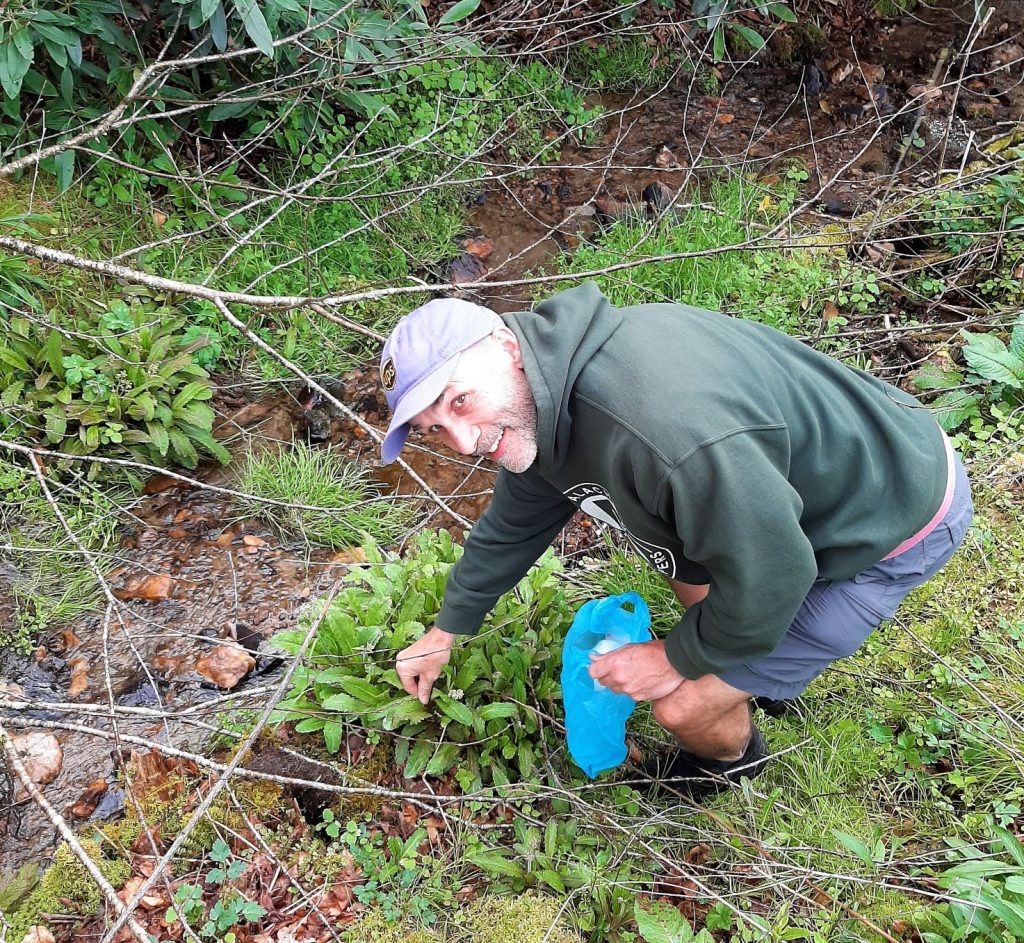Some folks call Spring in the mountains Green Up time. As Winter releases its grip (begrudgingly!), the hills and hollers go green from the bottom to the top like mercury rising in a thermometer. Staying with the theme, many Spring greens begin to appear in abundance. About 100-plus years ago, the emergence of those greens signaled a welcome change in the diet, if not also the weather! Some called these early greens “stretch food” because it helped bridge the gap between the end of winter and beginning of early garden stock.

There was water cress (creasy greens), poke sallet, speckled dock, crow’s foot, pepper grass, ramps and my new favorite: Branch Lettuce (aka Brook Lettuce, Mountain Lettuce), among many others. First of all, let us be clear, it’s not lettuce, but a leafy perennial found along marshy branches (creeks) in the Appalachian Mountains from Pennsylvania to the hills of Northeast Georgia.
The term “Branch Lettuce” first appeared in literature in 1894 as a part of a recipe that was described as good enough to satisfy a gourmet! So, let’s talk about that! Even though it does grow in my home state of Kentucky, I’d never heard of it until got to Ashe County, NC. It was introduced to me as Kilt (or killed) Lettuce by my girlfriend Julie Seatz Alexander, who grew up near Todd, NC, as one of those comfort foods that nourish our souls and flood our minds with nostalgia.
As the Peeper frogs began their chorus of love calls and the Robins migrated from their Winter climes, Julie and I started our hunting and gathering up a creek on family land just up from her Grandparents old homeplace. Muck boots would have been better tromping attire, but dry feet were my last concern.

Branch lettuce grows best in marshy or silty bends in a creek and not where the water moves too fast down vertical rocky breaks. Before too long we were excited to find our first leafy clump of our quarry. I was instructed that smaller/newer leaves (near the middle of the clump) are the best, so we began the harvest! I can’t think of many things that connect us more strongly to our past than collecting native and wild plants! The fact that Branch Lettuce is a perennial meant that Julie’s grandmother and family probably picked from these same spots for many decades before.
After gathering a bag full of Branch Lettuce, it was time to head to the store to fill out the menu: vinegar, pinto beans and cornbread. Preparation of the meal is where the path diverges. Julie posted the photo of me picking Branch Lettuce and asked (on a local social media site) asking how other folks served it.
The response and warm sentiments of yesteryear were overwhelming! As per Julie’s family tradition, she boiled the greens with a significant amount of vinegar and a little oil. Her preferred serving of Kilt Lettuce was layered with cornbread and pintos, so that’s they way we had it. It was delicious, even though the cornbread didn’t taste like Mamaw’s (and it probably never will, one of those inescapable truths if only because grandma cooked with such experience, care, devotion, love, and probably a fair amount of lard).
The winners of our very unscientific poll of how to fix Kilt Lettuce on social media included 48% of those responding using fatback or bacon drippings with Spring onions, and 36% with bacon grease, onions plus vinegar. Some interesting variations included scalded milk, buttermilk, taters, and Granny Smith apples. Most all recipes included the every day staple of cornbread. Now THAT is a Green up, Spring time Mountain Meal!
Please share your recipes or preferred ways to serve Branch Lettuce in the comments section on Facebook and, as always, thanks for commenting and sharing this post so more folks can see it!

